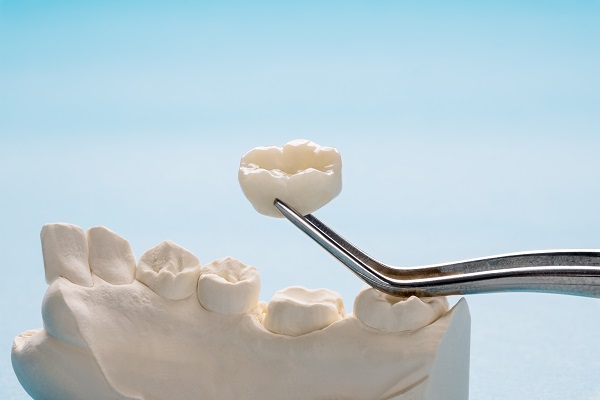How Does a Dentist Prepare a Tooth for a Dental Crown?

A dental crown is a cap used to completely cover back moral teeth. The process of having a crown placed is quite simple, but there are a few key preparation steps that a dentist must take first.
The preparation steps for getting a dental crown
Outlined here are the steps that a dentist takes to prepare a tooth for a dental crown. Review this information when preparing for an upcoming appointment.
First and foremost, the dentist will numb the patient using a local anesthetic. This is necessary because it helps prevent the patient from feeling any pain or discomfort.
1. Damage removal
The first step that a dentist takes in preparing a tooth for a dental crown is to remove any damaged or decayed areas. A dental drill is used to carefully do this. Although it sounds painful, the dentist does ensure that proper numbing has been done to eliminate any discomfort. Having damaged or decayed areas removed is crucial in restoring the health of the tooth and surrounding areas.
2. Cleaning
Next, the dentist cleans out the tooth. In most cases, the removal of damage or decay will result in empty spaces, even if they are small. Because these empty spaces are susceptible to bacteria growth, it is essential that they are thoroughly cleaned out and disinfected.
3. Filling
Once the tooth has been cleaned out, the dentist will fill any empty spots with a dental material called gutta-percha. This material is 100% safe for the teeth and mouth. It is used to keep bacteria out of the tooth, which eliminates any potential for new infections.
4. Smoothing
The final step in tooth preparation is for the dentist to smooth the surfaces of the tooth. Often, a decayed or damaged tooth is rough to the touch or has areas that are sharp, which could put the rest of the mouth at risk of being scraped or cut. To smooth out the surfaces, the dentist will use instruments to shave down certain areas. The numbing agent provided at the start of the procedure will prevent any discomfort.
What happens next
After the dentist follows the preparation steps, the tooth will be ready for the temporary dental crown. From there, the patient returns home for a few weeks while waiting for the permanent dental crown to be ready.
The dentist advises patients to avoid eating anything too hard or sticky, as this could dislodge the dental crown and damage the freshly restored tooth.
Find out more
Individuals who want more information on what it is like to get a dental crown should consult directly with a general dentist. Any questions or concerns about the process can be addressed by the dentist, and an evaluation can be performed to get started. Reach out today to learn more or to get scheduled!
Request an appointment here: https://www.drscottdlurie.com or call Dr. Scott D. Lurie at (732) 227-4814 for an appointment in our East Brunswick office.
Check out what others are saying about our dental services on Yelp: Dental Crowns and Dental Bridges in East Brunswick, NJ.
Related Posts
Dental crowns are a reliable and durable solution for restoring the appearance and function of damaged teeth. While dental crowns are designed to last years, proper care and maintenance are essential for extending their lifespan. Following practical steps and working closely with your dentist can protect your investment and enjoy a confident smile for years.Maintaining…
Many parents often forget the need to get a kid friendly dentist when choosing a dentist for their children. A kid friendly dentist offers additional benefits that are not available from a regular dentist's office. Some might also get confused when they encounter pediatric dentists and wonder if there is any difference. Pediatric dentists also…
An emergency dentist provides immediate care for urgent dental issues. Dental emergencies can happen anytime, often causing pain or discomfort that cannot wait for a regular appointment. Recognizing the signs of a dental emergency helps patients seek the right care quickly and can prevent further complications and protect their oral health.A dental emergency calls for…
Dental restorative procedures like implant supported dentures can be a solution to partial or complete teeth loss. No one wants to lose a tooth, but you may experience it due to situations beyond control. In addition to transforming your smile, the procedure can boost your self-esteem and have your teeth functioning fully in no time.An…
